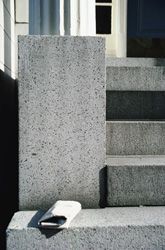Improving performance and durability in concrete mixes
With the introduction of small amounts dispersants in concrete, it possible to optimise the self-compacting properties of this material in its fresh state. Superplasticisers and high-range water-reducing admixtures (HRWRAs) are additionally able to reduce the final material's porosity by allowing the concrete to become workable with less water and thus enhance its durability. These properties translate into many practical advantages for the construction sector, which include minimising the labour-intensive work involved in placing ordinary concrete by vibration. Research work performed within the framework of the SUPERPLAST project led to a better understanding of the underlying mechanisms through which polymeric admixtures interact with cement suspensions. In specific, two classes of superplasticisers of the latest generation were studied: modified lignosulfonates (LS) and polycarboxylates (PC). The use of model powders allowed material scientists and chemists to overcome the complexity and variability of concrete components and the difficulties arising from the various climatic conditions under which they are used. Different cement model powders were investigated, for this purpose, and magnesium oxide (MgO) and magnesium hydroxide (Mg(OH)2) were selected. The superiority of these inert model systems over others lies in that they both have particle surface charge and pH values similar to cement suspensions. The calculations of interparticle forces as well as the identification of the reactions consuming admixtures will open new paths for the development of superplasticisers with higher performances at lower dosages. Concrete of high durability and enhanced behaviour through time could result in reduced energy costs for the maintenance and repair of concrete infrastructure. Moreover, the results of this study allow project partners to envisage the development of tailored superplasticisers for specific applications with fewer incompatibilities than those currently persisting in some superplasticisers and cement combinations.



